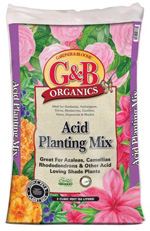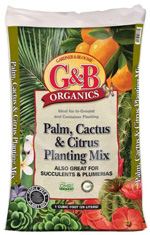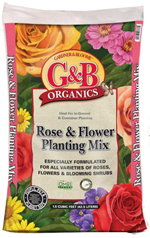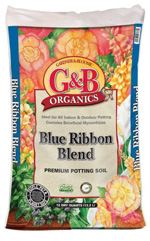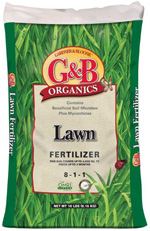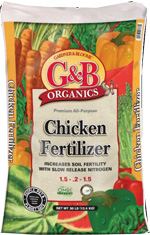|

|
 |
FEATURED QUOTE : "April hath put a spirit of youth in everything." |
 |
 |

|
Few of us can conceive of cooking (or eating) without the presence of tomatoes in our diet. In the US, the tomato is the summer vegetable (or fruit?) most often grown at home--and there are plenty of cultivars to grow. The U.S. Department of Agriculture claims there are 25,000 tomato varieties. But this delicious food didn't always have it so easy. Up until the 1800's, most people viewed the tomato with caution--and many with outright fear. Originally grown by the Aztecs and Incas as early as 700 A.D., it is thought that the first seeds made their way across the Atlantic sometime in the 1500's. Early Europeans categorized it with a group of well-known poisonous plants of the era: henbane, mandrake and nightshade. Because of its association with nightshade (whose hallucinogenic effects include visions and the sense of flying), it quickly became associated with witchcraft. In German folklore, witches would use plants such as mandrake and nightshade to summon werewolves (in fact, the common German name for "tomato" translates to "wolf peach"); because of this, the tomato was widely avoided (by everyone other than practitioners of the "dark arts," that is). Legend has it that one of the main turning points in the popularity of the tomato in the US is largely due to one Colonel Robert Gibbon Johnson. On September 26, 1830, standing on the courthouse steps in Salem, Massachusetts before a crowd of interested onlookers, he proclaimed his intention to eat a whole basket of the red fruit and survive. One member of the audience was his doctor, who loudly stated, "The foolish colonel will froth and foam at the mouth and double over with appendicitis. All that oxalic acid - one dose and he is dead! He might even be exposing himself to brain fever! Should he, by some unlikely chance, survive, his skin will stick to his stomach and cause cancer!" Colonel Johnson proceeded to eat the basket of tomatoes and survive with no ill effects. Even with all its detractors, the tomato had a few fans. Some people once believed that placing a ripe tomato on a mantel of a new dwelling would ward off evil spirits and guarantee future prosperity. Since ripe tomatoes tended to go bad quickly, it became popular to make stuffed fabric tomatoes to put on the mantel. Invariably, people sewing began to use them as handy pin holders. To this day, pincushions are very commonly covered with red fabric--and many still look like tomatoes. Today, are much more likely to put a ripe tomato on our plates than on our mantels. We can enjoy all the different shapes, colors and flavors of tomatoes available. Here's wishing you a bumper crop this summer! |
 |
|
Spring is the time to fertilize your permanent plantings. Most ornamental trees, bushes, lawns and ground covers will respond well to fertilizer right now. In good years, abundant spring rains green up the hillsides and bring out wildflowers, gardeners don't have to water as much, and salts are leached out of our soils. On the other hand, heavy rains also wash soluble nutrients, especially nitrogen, down to lower levels--sometimes out of reach of roots. In that case, fertilize the basic landscape with a complete granulated fertilizer high in nitrogen. If you have a straggly ground cover that's never quite covered the ground, a sprinkling of granulated fertilizer as soon as the weather warms will do wonders. Water it in thoroughly or apply it when the weatherman says that it's going to rain. This doesn't mean you should simply fertilize everything in sight. Many plants fall into the broad category of specialty plants because they require special handling. Some specialty plants, including cacti, succulents, and native plants, have little or no need for fertilizer. Others, like azaleas, ferns, roses, fruit trees, and vegetables have unique requirements. Ask one of our knowledgeable garden center experts about the best amendments for your own garden's individual needs. There are other exceptions, too. Old overgrown gardens in rich soil sometimes become virtual jungles, feeding on their own refuse. To fertilize a garden when there's no sign of nitrogen deficiency--like stunted growth, yellow leaves, or disease--may simply contribute to more growth. Growth requires constant pruning, and once invasive plants have become established, you will wish you had never planted them at all. Feeding them would make their growth even more unrestrained. Plant new permanent specimens. Spring is one of only two optimal planting times each year, when gardeners plant almost anything grown in the permanent landscape, such as trees, shrubs, vines, and ground covers. The other is autumn. Planting in fall is traditionally considered to be just a bit better than planting in spring, but after a year or two you'll never know the difference. Now through early summer is the time to look your garden over: objectively look at its strengths and weaknesses; replace troublemakers you don't like; and add permanent specimens where needed. Choose drought-tolerant plants over heavy water users if you can, and be sure to group plants according to their needs for water, sun shade, and soil type. Before purchasing any plant, research its requirements and growth habits. We would be happy to help you select the best plants, amendments, and fertilizers for your specific landscape. You'll be on your way to building a better garden this year! |
 |
|
An artichoke (Cynara scolymus or C. cardunculus) is a giant thistle which becomes a beautiful flower. Well, it could become a beautiful flower--if we didn't pick it as a flower bud and eat it as a vegetable. Artichokes, native to the Mediterranean region, were later introduced to Southern Europe and Asia. The artichoke has dramatic and sculptured gray green foliage that is very attractive in your vegetable garden. In fact, this vegetable is beautiful in your ornamental garden, too! An artichoke’s overall form is almost like a fountain and needs up to 4 feet of space for full growth. It likes full sun, cooler temperatures and moist soil. If you live in a very hot zone, plant it in the shade. Mulch under the plant to help maintain the moisture that it loves. At planting time, plant dormant roots or young plants with the root shoots just above the soil level and then mulch. Water at least once a week, keeping the root system moist. Aphids, snails, slugs, and earwigs tend to be the artichoke “pest of the day.” Blast the aphids and earwigs off with water. The best time to harvest your artichokes is once the edible flower buds are 2-4 inches in diameter. Cut off the bud, including 1.5 inches of stem with the bud. At the end of the season, cut back the old bearing stems/foliage to near ground level and mulch around the remaining plant. Don’t forget to give your artichokes a well-balanced fertilizer. |
 |
|
What’s the best way to over-seed a lawn? Answer: For bare spots, make sure to remove any old dead growth that still exists. Then scratch the soil surface at least 1-2 inches deep and level off. Apply your seed and cover with 1/4 inch of top dressing. Make sure to keep the area moist at all times until the seed has germinated and rooted. You should be able to mow the spot (on a high level setting) three weeks after the seed germinates and is visible. Before over-seeding an entire lawn, mow your lawn to half its normal height. We recommend dethatching your lawn and removing all thatch debris before applying new seed. Then over-seed at the recommended over-seeding rate on the package of your lawn seed. Cover the entire lawn with a 1/4 inch layer of the same top dressing mentioned above. Switch your watering cycle to at least twice daily (short cycles) the first two weeks, once per day the second week, every second day the third week and then back to your normal watering cycle from then on. Try not to mow for at least two weeks after applying seed. Then do so at a higher than normal level setting until the new grass is well established. |
 |
|
This is wonderful served with vanilla ice cream! Ingredients:
|
|
Step by Step:
Yield: 8 servings |
 click here for a printer friendly version of this page
click here for a printer friendly version of this page |
Written content © 2004-2014 Garden Partners LLC, or respective authors. All Rights Reserved. Privacy Policy. All written content contained in this site is protected by United States copyright law and may not be reproduced, distributed, transmitted, displayed, published, or broadcast without prior written permission of Garden Partners, LLC. You may not alter or remove any trademark, copyright or other notice from copies of the content. Would you like a newsletter like this for your nursery or garden center? Please feel free to look at what we have to offer and contact us for your garden center marketing solutions. |



